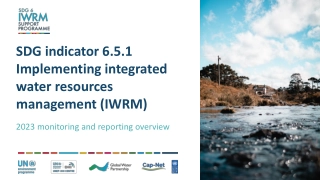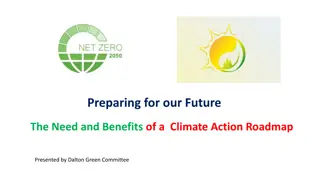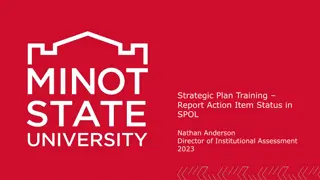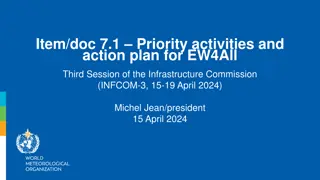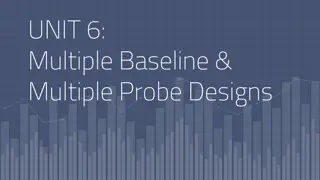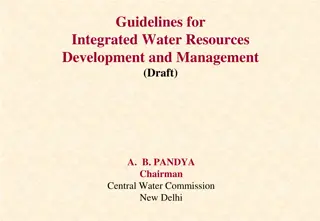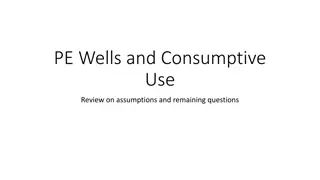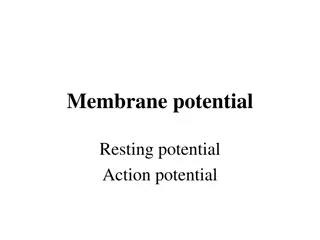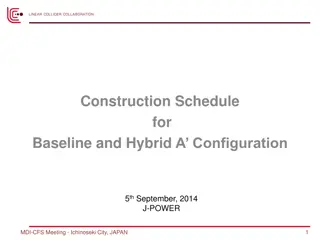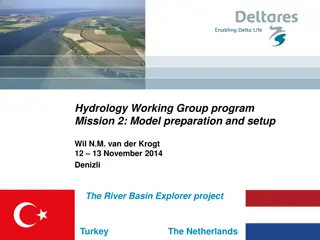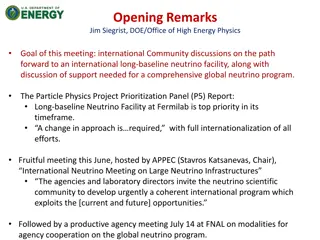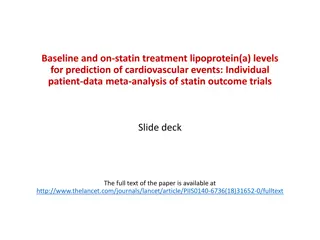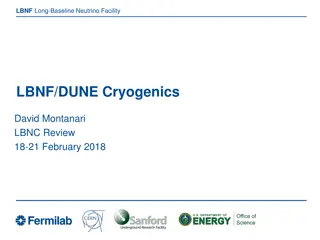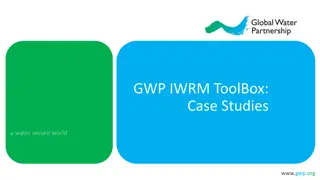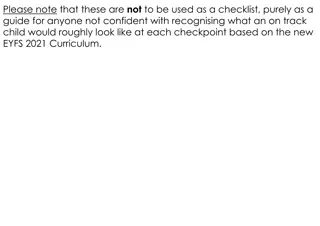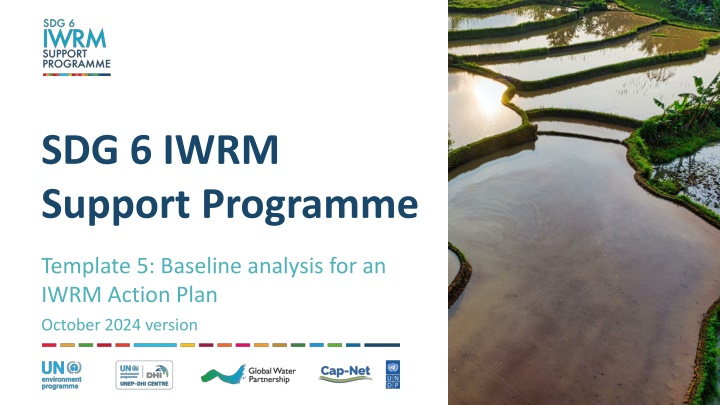
IWRM Baseline Analysis for Action Plan
"This template facilitates the baseline analysis for an Integrated Water Resources Management (IWRM) Action Plan, focusing on water-related challenges in a changing climate, potential objectives, and actions. Sections cover challenges, policy responses, objectives, stakeholder mapping, and consultation processes. Includes snapshots and challenges related to IWRM implementation, enabling environments, institutions, and participation. Utilize data sources for comprehensive analysis."
Download Presentation

Please find below an Image/Link to download the presentation.
The content on the website is provided AS IS for your information and personal use only. It may not be sold, licensed, or shared on other websites without obtaining consent from the author. If you encounter any issues during the download, it is possible that the publisher has removed the file from their server.
You are allowed to download the files provided on this website for personal or commercial use, subject to the condition that they are used lawfully. All files are the property of their respective owners.
The content on the website is provided AS IS for your information and personal use only. It may not be sold, licensed, or shared on other websites without obtaining consent from the author.
E N D
Presentation Transcript
SDG 6 IWRM Support Programme Template 5: Baseline analysis for an IWRM Action Plan October 2024 version
Baseline analysis The purpose of the baseline analysis is to facilitate the Stage 2 process of the SDG 6 IWRM Support Programme, which focuses on establishing an Integrated Water Resources Management (IWRM) Action Plan. The baseline analysis should be produced during the preparation phase of Stage 2, and updated throughout the process. This PowerPoint format provides the tools to work towards establishing a baseline analysis that frames the main water-related challenges in the context of a changing climate, and opportunities that the Stage 2 process might focus on, as well as potential objectives in response to those challenges, and actions that could be undertaken in line with those objectives, through an IWRM approach. Try to provide the information requested on each slide as concisely as possible, while remaining complete and evidence-based in your answers. The information may be presented over more than one slide, as needed. The baseline analysis is organised into five sections, to frame conversations, but also to provide input to the IWRM Action Plan: 1. the challenge this should provide input to chapter 1, strategic context, of the Action Plan; 2. the existing policy response this should provide input to chapter 1, strategic context; 3. common objectives as opportunities for the IWRM Action Plan this should provide input to chapter 2, overarching goal and priority objectives; 4. stakeholder mapping; 5. the proposed consultation process and organisation structure Any questions may be directed to the SDG 6 IWRM Support Programme: sdg6iwrmsp@gwp.org
SDG 6.5.1 snapshot Instruction: Provide an overview of the most recent status of IWRM implementation in your country (Average, Enabling environment, Institutions and participation, Management instruments, Financing), and describe what has changed in the scores compared to previous SDG 6.5.1 reporting rounds. Any significant measures that have boosted progress across monitoring rounds should be highlighted. Please use data from the Country Database available on the IWRM Data Portal at http://iwrmdataportal.unepdhi.org/countrydatabase
IWRM challenges: enabling environment Provide a brief overview of the main challenges that can be identified from comparing the SDG 6.5.1 scores of the current and previous reporting rounds as regards the enabling environment (feel free to add more lines if needed). This may be based on the stakeholder consultation reports available on the SDG 6 IWRM Support Programme s results map (see https://www.gwp.org/en/sdg6support/sdgmap/), among other sources Challenges: 1. 2. 3. 4.
IWRM challenges: institutions and participation Provide a brief overview of the main challenges that can be identified from comparing the SDG 6.5.1 scores of the current and previous reporting rounds as regards the institutions and participation (feel free to add more lines if needed). This may be based on the stakeholder consultation reports available on the SDG 6 IWRM Support Programme s results map (see https://www.gwp.org/en/sdg6support/sdgmap/), among other sources Challenges: 1. 2. 3. 4.
IWRM challenges: management instruments Provide a brief overview of the main challenges that can be identified from comparing the SDG 6.5.1 scores of the current and previous reporting rounds as regards the management instruments (feel free to add more lines if needed). This may be based on the stakeholder consultation reports available on the SDG 6 IWRM Support Programme s results map (see https://www.gwp.org/en/sdg6support/sdgmap/), among other sources Challenges: 1. 2. 3. 4.
IWRM challenges: finances Provide a brief overview of the main challenges that can be identified from comparing the SDG 6.5.1 scores of the current and previous reporting rounds as regards the management instruments (feel free to add more lines if needed). This may be based on the stakeholder consultation reports available on the SDG 6 IWRM Support Programme s results map (see https://www.gwp.org/en/sdg6support/sdgmap/), among other sources Challenges: 1. 2. 3. 4.
Existing water-related studies and assessments Instructions:This slide should present the state of the art in the country s evidence base for water management, including hydrological surveys, flood-risk assessments, water quality reports, climate risk assessments, etc. This evidence base might frame the importance of the identified challenges, priorities and proposed actions, and should be presented with relevant representative data points. Data points: 1. 2. 3. 4.
National SDG 6 snapshot Instructions:This slide aims to present a brief snapshot of the country s progress towards the achievement of SDG 6, taking the data from https://www.sdg6data.org/en/snapshots.
Main SDG 6-related challenges Instructions: This slide aims to present a brief analysis of some of the main challenges related to the achievement of SDG 6, based on the previous slide. Challenges: 1. 2. 3. 4.
National climate change challenges Instructions: This slide should present a brief summary of the national challenges regarding climate change vulnerability and adaptation efforts, including how water is affected by climate change. Challenges: 1. 2. 3. 4.
Challenges from other relevant sectors Instructions: This slide should summarise which other sectors present challenges through water and climate change in the national context, including agricultural productivity, conservation or restoration of freshwater ecosystems, energy production, urban growth, etc. Challenges: 1. 2. 3. 4.
Existing water-related policies Instructions: This slide should refer to existing water-related policies, plans and strategies, beyond water resources management (which should appear on the next slide), such as sanitation, irrigation, flooding, drought, water quality, freshwater ecosystems, etc., which may be the basis for identifying areas of opportunity in which an IWRM approach could generate significant progress in water-related areas 1. 2. 3. 4.
Existing water management policies Instructions: This slide should refer to existing water management policies, plans and strategies, such as national and/or subnational IWRM and water-related planning frameworks, policies, institutions, management instruments, financing, and major programmes 1. 2. 3. 4.
Existing climate-related policies Instructions: This slide should refer to existing climate policies, plans and strategies, as related to water, including references to water in the National Adaptation Plan or Nationally Determined Contributions (NDCs), plans under the various modalities of the Green Climate Fund, disaster risk reduction initiatives such as those under the Sendai Framework, resilience- building plans, ongoing institutional reforms, etc.). These references should allow the integration of water in these response strategies to be better understood. 1. 2. 3. 4.
Existing related development policies Instructions: This slide should refer to existing national efforts related to water, in line with, inter alia, plans under the Kunming-Montreal Global Biodiversity Framework, the Freshwater Challenge, national agricultural plans, energy security plans, urban development plans, etc. The relationship between these policies and water should be briefly described. 1. 2. 3. 4.
Existing funding and financing mechanisms Instructions: This slide should present opportunities to align actions aiming to achieve water security with potential funding and/or financing sources, potentially including national public budgetary allocations, national and multinational private sector investments and international water and climate-related donors and financial mechanisms. Where appropriate, other more innovative funding sources may also be considered, such as impact investments, green bonds, water funds, water credits, debt swaps for nature or climate, decentralised finance (DeFi) and others 1. 2. 3. 4.
Section 3: Overarching goal and priority objectives for the IWRM Action Plan
Goal and priority objectives of the Action Plan Instructions: This slide should present an overarching goal that the IWRM Action Plan might attempt to achieve within a given timeframe, as well as a set of priority objectives which support achievement of that goal. The overarching goal and the priority objectives may be around progress on various SDGs, finance mobilised, or progress on some other quantifiable metric
Potential priorities for an IWRM Action Plan Instructions: Based on the challenges presented, and in line with the overarching goal and priority objectives, this slide should define some initial priority areas of intervention that could increase the country s water and climate response, through an IWRM approach and in line with SDG 6. These potential areas of intervention will be continually refined throughout the Stage 2 process, and should reflect the political will, alignment with ongoing processes, potential cost and availability of funding and potential impact of those areas of intervention. The opportunities should may be thematic and/or geographical in scope. 1. 2. 3. 4.
Risks and risk mitigation strategies Instructions:To provide confidence in the plan s feasibility and robustness and allow stakeholders to understand and plan for potential mitigation actions to face any significant risks, please fill in below the main risks identified, including their likelihood and potential impact, and appropriate risk mitigation measures. Risk identified Possible implications of the risk Likelihood (high- medium- low) Estimated impact risk medium- low) Example: Medium Mitigation strategy of (Delete examples) (high- Example: Medium Example: Loss of funding source Example: Halt of the action/projectname Example: diversify funding sources to not overly depend on one donor [Rows should be added as needed]
Stakeholder mapping Instructions: Here the results of the stakeholder mapping (using Template 6) should be included, especially mentioning which stakeholders might be part of the Task Force and Consultation Group for the Stage 2 process, with a brief explanation as to why. The proposed set of stakeholders should take into account criteria of sectoral, gender, age and other forms of diversity. The tool here may be useful to support stakeholder mapping. Stakeholder Level Category Justification as a stakeholder Suggested role in the Stage 2 process Observations Geographical scope where the organisation has activities/influence/ jurisdiction The category to which the organisation belongs: Government, Private Sector, etc. Organisation name of your stakeholder Add notes if needed Add notes if needed Add notes if needed Add stakeholder Add stakeholder Add stakeholder Add stakeholder Add stakeholder Add stakeholder Add stakeholder Add stakeholder Add stakeholder Add stakeholder Add stakeholder Add stakeholder
Stakeholder mapping: interest and power Instructions: If considered useful, columns G and H from Template 6 may be used to classify stakeholders by their power and interest in water resources management, placing all stakeholders in one of the four boxes HIGH POWER / HIGH INTEREST How are they already influencing the work? Is this beneficial or harmful? How can we encourage them to spend their privilege ? HIGH POWER / LOW INTEREST Could the work benefit from their influence? How do we create and foster buy-in? Power LOW POWER / LOW INTEREST Does/should the work involve them? How might we promote the benefits? LOW POWER / HIGH INTEREST What has their role been to date? What are their perspectives? How might we grow their influence? Interest Source: Based on GWP (2022). The MSP Sourcebook: A Guide for Multi-Stakeholder Partnerships in Water Management.
Section 5: Proposed consultation process and organisation structure
Proposed consultation process Instructions: This slide should present the number of proposed consultations, the suggested timeline, the suggested methodological focus to be employed, a draft agenda for the consultation(s), working language(s), and the venue(s) or platform and date(s) of consultation(s), considering the available resources, current circumstances of the country and common engagement mechanisms. As many slides may be presented as needed to address this section
Proposed organisation structure Instructions: This slide should present the proposed integration of the different stakeholders in the task force and consultation group, using the stakeholder mapping and the image below, as well as any coordination mechanisms that may need to be defined within and between each of these levels

